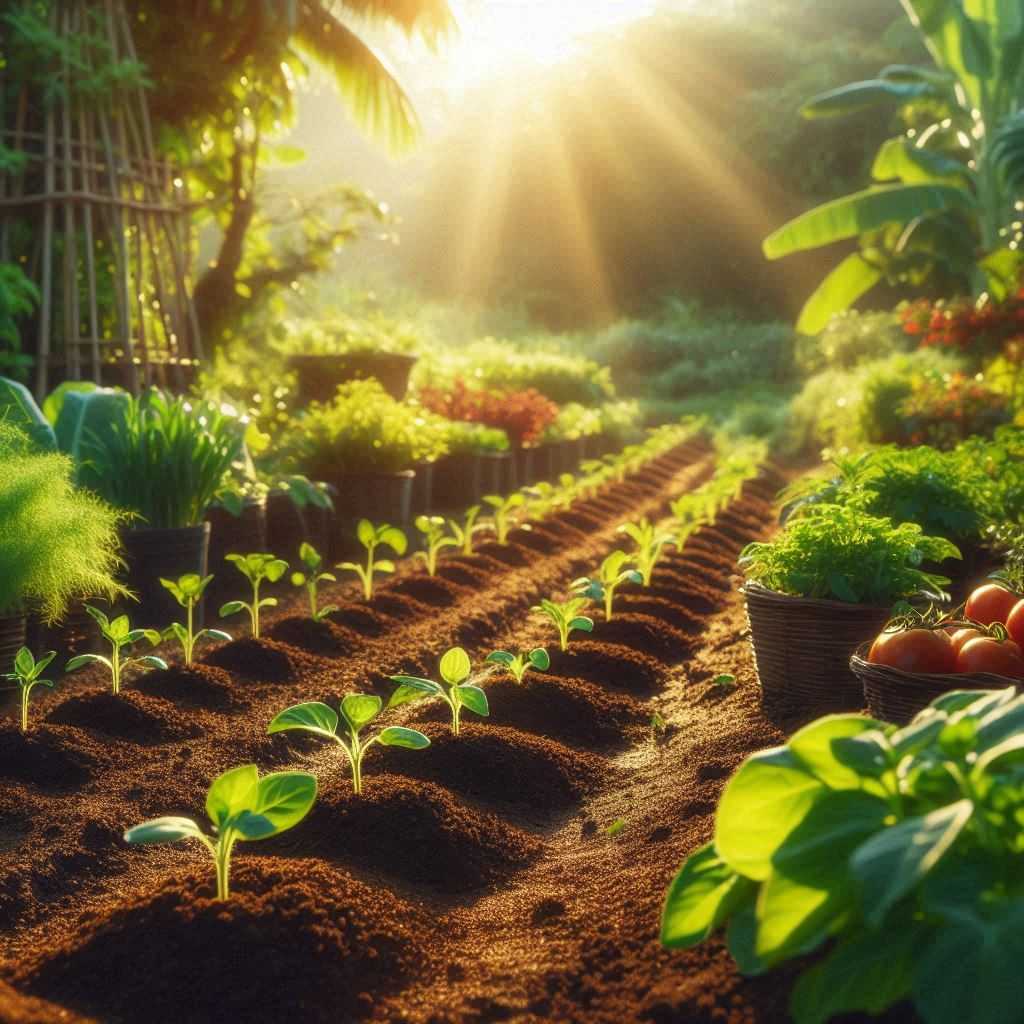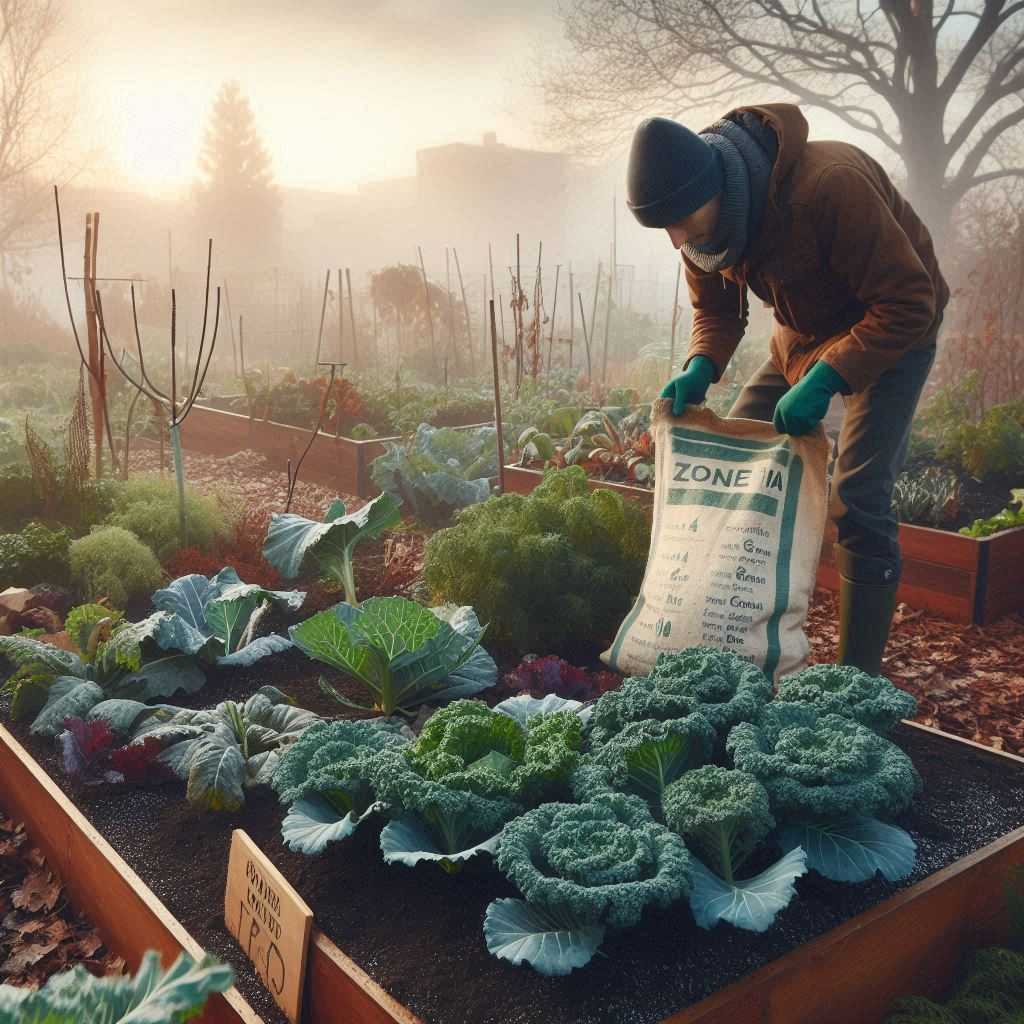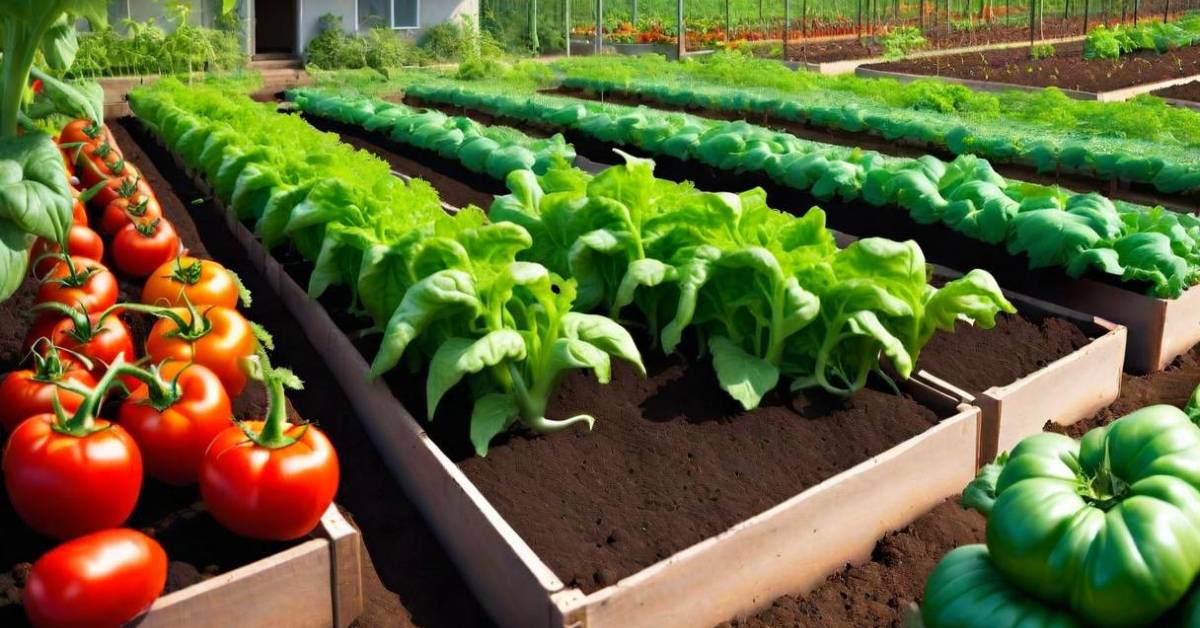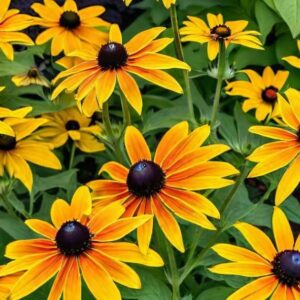Introduction to Zone 10a
Zone 10a is one of the hottest USDA Hardiness Zones. It has warm summers and mild winters. Parts of Southern California, Southern Florida, and other coastal areas are in this zone. The warm weather makes it possible to grow a lot of different vegetables, fruits, and flowers all year long, but you have to be very careful to avoid the problems that the extreme heat and rare cold snaps can cause.
This guide goes into great detail about the best ways to garden in Zone 10a vegetable planting schedule. It includes planting schedules, tips for getting the soil ready, and specific suggestions for both vegetables and flowers. Whether you’ve been gardening for a long time or this is your first time, this complete guide will help you get the most out of your Zone 10a garden.

Understanding Zone 10a Vegetable Planting Schedule
Geographical Locations
Parts of California, Florida, and coastal regions are in Zone 10a. This zone is mostly made up of warm, muggy places. Low temperatures in this area are usually between 30°F and 35°F (-1°C and 1.7°C), which means frost is rare but possible
Climate Details
The climate in Zone 10a is generally characterized by:
- Mild Winters: Winters are mild, with average low temperatures between 30°F to 35°F (-1°C and 1.7°C). This makes it possible to grow a lot of different foods.
- Hot Summers: Temperatures can rise above 90°F (32°C), so it’s important to pick plants that can handle the heat and water them properly.
- Seasonal Variations: It’s possible to grow plants almost all year, but the best times to plant depend on the crop and the time of year.
Zone 10a Planting Calendar
Due to its longer growing season, Zone 10a has a unique planting schedule. Here is a thorough list of what to plant and when to make sure you get the most out of your garden.
1. Spring Planting (March – May)
For many warm-season plants and flowers, spring is the best time to start them in Zone 10a vegetable planting schedule.
Vegetables:
- Tomatoes: Plant seeds indoors in February or March, and move them outside in April, when the soil is warm enough. Heat-resistant types, like “Heatmaster,” are suggested.
- Peppers: Start seeds indoors in early March. For a summer yield, move them outside in late April.
- Cucumbers: Direct sow in April for summer vegetables that grow quickly and taste good.
- Zucchini: Once you plant them in April or May, they will do very well in warm soil and give you lots of fruit all summer long.
Flowers:
- Zinnias: Plant seeds between the end of March and the beginning of April. These colorful flowers are able to withstand high temperatures and, during the summer, they will provide a splash of color.
- Marigolds: Sow seeds directly in the month of April. Marigolds are not only lovely to look at, but they also help keep pests away from gardens.
- Cosmos: It is best to plant seeds in March so that they will continue to bloom throughout the summer and into the winter.

2. Summer Planting (June – August)
Because the summers in Zone 10a are so hot, it is important to choose plants that can withstand high temperatures and to water them regularly.
Vegetables:
- Melons: During the month of June, sow seeds of watermelon and cantaloupe. During the late summer, these fruits are able to be picked since they grow in the heat.
- Eggplants: It is recommended to transplant seedlings in June for harvesting in the late summer or early fall.
- Okra: Direct sow in the month of June. Okra is a plant that can thrive in high temperatures and will continue to produce well throughout the summer.
- Sweet Potatoes: Early in June, plant slips. You can pick sweet potatoes in the fall because they like it hot.
Flowers:
- Sunflowers: Direct sow in the month of June. Places that are hot and sunny are ideal for the growth of these magnificent flowers.
- Portulaca: This plant, which is also known as moss rose, thrives in environments that are hot and dry.
- Marigolds: If you want to keep your garden looking vibrant and resistant to pests, continue planting marigolds during the summer.
3. Fall Planting (September – November)
It is a wonderful time to grow crops that are in season during the fall and to be ready for winter blooming.
Vegetables:
- Broccoli: For a harvest in the winter, transplant seedlings in the month of September. In the fall and winter, when the temperature is lower, broccoli is able to flourish.
- Kale: Sow seeds directly in the month of October. The kale plant is a hardy plant that will continue to produce leaves even during the winter.
- Spinach: If you plant in October, you will have a crop that grows quickly, is rich in nutrients, and can be picked quite late into winter.
- Carrots: Late September is the time to direct sow. During the winter months, carrots are gathered because they thrive in cool conditions.
Flowers:
- Pansies: Plant in October. Pansies can handle cold weather and will bloom all winter.
- Snapdragons: If you plant in September, the flowers will last all winter.
- Calendulas: Sow seeds directly in the month of October. During the winter, calendulas are a good choice for color because they thrive in cool climates.

4. Winter Planting (December – February)
Because winters in Zone 10a are moderate, it is possible to continue gardening with hardy plants throughout the year.
Vegetables:
- Onions: Plant sets in December to gather in late spring. Onions can handle the cold and grow well in the winter.
- Garlic: If you plant cloves in December, you can gather them in the summer. This plant does best in cold weather and is easy to grow.
- Lettuce: Plant in January for a quick crop that can grow in cool weather. In the winter, when it’s cooler, lettuce grows very quickly.
- Peas: Plant seeds in February to get a crop early in the spring. Peas like it cooler, and they will produce a lot in late winter.
Flowers:
- Calendulas: Continue planting for flowers in the winter.
- Snapdragons: By planting continuously during the winter months, you may provide color and interest to your landscape.
- Sweet Alyssum: Plant for a winter ground cover that is aromatic, low-growing, and provides beauty to the landscape while also attracting pollinators.
Regional Considerations: California vs. Florida Zone 10a
1. Zone 10a California Vegetable Planting Guide
Some places of Southern California are in Zone 10a, which has a Mediterranean climate with dry summers and mild, wet winters. To get the most out of your garden in this environment, you need to use certain techniques.
Best Vegetables to Grow:
- Tomatoes: It is recommended to select types like as “San Marzano” or “Early Girl” that are adjusted to the climate of California.
- Peppers: California Wonder and Anaheim peppers do well in the warm weather in the state.
- Leafy Greens: You can grow lettuce and kale in cooler months or in the shade in the summer.
- Beans: You can plant bush beans and pole beans in the spring and early fall.
Gardening Tips:
- Water Conservation: Due to the dry summers of California, water conservation is an extremely important practice. Think about using varieties that can handle drought and irrigation methods that use less water.
- Pest Control: Pests can live in California all year because the winters are mild. Integrated pest management (IPM) is a way to keep pests away.
- Microclimates: Use the different microclimates in your garden to your benefit. For instance, to keep plants that don’t do well in hot weather safe, put them where they will be shaded in the afternoon.
2. Zone 10a Florida Vegetable Planting Guide
Zone 10a in Florida has a tropical to subtropical climate, with summers that are hot and humid and winters that are mild. There are a lot of different fruits and vegetables that can grow in this climate, but it also has some problems, like high humidity and a lot of pests.
Best Vegetables to Grow:
- Tropical Vegetables: The hot and sticky weather in Florida is great for growing okra, sweet potatoes, and cowpeas.
- Tomatoes and Peppers: Plant types that can handle high temperatures and give them shade to keep them from getting too much sun.
- Leafy Greens: Growing lettuce, kale, and spinach during the winter months, when temperatures are lower, is possible.
- Beans: Florida’s weather is good for beans, especially if they are grown in the early spring or fall.
Gardening Tips:
- Humidity Management: Diseases caused by fungi can be brought on by high humidity. Make sure there is enough air flow around your plants, and if you need to, use fungicides.
- Pest Management: Pests are able to flourish in Florida because of its warm temperature. Make use of organic methods for pest management, and always keep a close eye on your plants for any indications of an infestation.
- Soil Management: It’s possible that the sandy soils in Florida need to be fertilized more frequently. Adding organic matter to the soil will make it stronger and better able to hold nutrients.
Special Considerations for Zone 10a
It can be hard to garden in Zone 10a because you have to keep an eye on the soil quality, figure out the best way to water, and get rid of pests. Here are some important tips that will help you get through these problems.
1. Soil Preparation
The type of soil in Zone 10a can be different. In many places, especially in Florida, the soil is sandy. Make sure your soil is ready to plant by doing these things:
- Soil Testing: Check the pH and nutrient amounts of your soil before you plant. Most vegetables do best in soil that is slightly acidic to neutral (6.0 to 7.0 pH). Use lime (to raise pH) or sulfur (to lower pH) to change the pH levels as needed.
- Amendments: Adding compost or well-rotted dung can help the structure of the soil, especially if it is sandy. This not only makes the earth more fertile, but it also helps it hold on to water better.
- Mulching: Putting mulch around your plants will keep the soil wet, keep it at the right temperature, and stop weeds from growing. For Zone 10a, the best soil is something natural, like straw, leaves, or wood chips.
2. Watering Practices
Because the summers in Zone 10a can be extremely hot and the winters, it’s important to water plants well.
- Drip Irrigation: You might want to install a drip watering system to get water directly to the roots. This will keep plants consistently moist and reduce the amount of water that evaporates.
- Watering Schedule: Water first thing in the morning to keep it from evaporating. You might need to water more often in the middle of summer, especially if you have plants that need more water, like tomatoes and peppers.
- Rainwater Harvesting: Use the rainy season to your advantage by collecting and keeping water. This is a good way to water your garden during dry times.
3. Pest and Disease Management
Pests may be able to stay active longer in Zone 10a because of its warm weather. How to get rid of common illnesses and pests:
- Common Pests: In Zone 10a, you can often find aphids, whiteflies, caterpillars, and snails. Neem oil, insecticidal soap, or diatomaceous earth are all natural ways to get rid of these bugs.
- Disease Prevention: Powdery mildew and blight can grow in some places of Zone 10a because of the high humidity. To stop these from happening, make sure there is enough air flow around the plants, don’t water them from above, and choose varieties that are immune to disease.
- Integrated Pest Management (IPM ): To use IPM, you can attract good bugs like ladybugs and lacewings, change the foods you grow to break the life cycles of pests, and use companion planting to keep pests away naturally.
Zone 10a Fruits and Vegetables
Because the weather is mild in Zone 10a, many types of zone 10a fruits and vegetables can grow there. Here is an in-depth look at the best choices for your garden.
Top Fruits for Zone 10a
1. Citrus Fruits
Here is the latest version of the guide, which has all the missing information filled in:
Oranges, Lemons, and Limes: These are common plants in Zone 10a fruits because they do well in the mild winters and hot summers. They need soil that drains well and full sun.
Grapefruits: Like other citrus fruits, grapefruits do well in this zone, especially if they are grown early in the spring.
2. Avocados
In Zone 10a, where it is warm and near the coast, avocados do well. Place them where they will get full sun and the dirt should drain well. They need to be watered often, especially when they are first starting to grow.
3. Figs
The warm weather in Zone 10a is good for figs, and they can handle drought once they are established. Plant them in early spring and make sure they get a lot of sun.
4. Bananas
Zone 10a is warm and muggy, which is great for bananas. The soil should be rich and drain well, and they need to be watered often. The best place for plants is in full sun.
5. Dragon Fruit (Pitaya)
This fruit from far away does very well in Zone 10a’s hot and dry weather. The vining cactus needs a strong trellis or other support, and it should be placed in soil that drains well.
6. Unique Crops
Passion Fruit: The warm climate of Zone 10a is ideal for the growth of this tropical vine. For climbing, it needs to be in full light, the soil should be well-drained, and there should be a solid support structure.
Pineapples: The sandy soils that are typical of Florida’s Zone 10a locations are ideal for the growth of pineapples. Due to the fact that they require soil that is well-drained and only a small amount of watering, they are an ideal option for dry months.
Top Vegetables for Zone 10a
1. Tomatoes
- To avoid the hottest parts of summer, it’s best to plant in early spring or autumn.
- “Heatmaster” and “Solar Fire” are two heat-tolerant varieties that are recommended for zone 10a vegetables.
2. Peppers
- Do well when it’s warm out in the spring and summer.
- Peppers like jalapeños and sweet bell peppers both work well.
3. Leafy Greens
- In the fall and winter, cool-season crops like kale, spinach and Swiss chard grow very well.
- During the warmer months, give them some shade to keep them from bolting.
4. Beans
- You can grow bush beans or pole beans in the spring or autumn.
- Plant beans with other crops every few years to keep the soil healthy and lower the risk of disease.
5. Root Vegetables
- Radish, carrots, and beets grow well in the fall and winter.
- For roots to grow straight and healthy, the soil needs to be loose and drain well.
Zone 10a Planting guide Flowers
In Zone 10a planting guide flowers can bloom all year, giving your garden colour and life. Here are some top choices:
1. Zinnias
Plant in the spring to get flowers in the summer. Zinnias are great for summer gardening because they can handle the heat and come in many colours.
2. Marigolds
You can plant marigolds from spring to summer. They are known to keep pests away. They are tough and do well in hot weather, and their flowers are bright and happy.
3. Cosmos
It is possible to plant cosmos in the spring, and they will continue to bloom throughout the summer and autumn. The cultivation of these flowers is simple, and they thrive in situations that are hot and dry.
4. Sunflowers
Planting sunflowers during the summer is an excellent idea. They flourish in direct sunlight and are well-known for the tall, bright yellow flowers that they produce.
5. Portulaca (Moss Rose)
This plant can handle being dry and hot, so it does well in those circumstances. Portulaca has bright flowers all summer long and doesn’t need much care.

Conclusion: Embracing the Challenges and Rewards of Zone 10a Gardening
Zone 10a vegetable planting schedule gardening is great because you can grow a wide range of fruits, vegetables, and flowers all year long. If you know when to plant, what to think about based on where you live, and how to care for your plants during different seasons, you can get the most out of gardening in this warm environment.
The rules of Zone 10a planting are the same whether you live in Florida’s tropical climate or California’s Mediterranean climate: prepare the soil, pick the right plants, and give them regular care to get a bumper crop. If you follow the right steps, your Zone 10a garden can grow and produce fresh food, lovely flowers, and the joy of a garden in full bloom all year long.
It is important to keep in mind that gardening is a journey, and that each season presents new possibilities to learn and develop. When you are willing to accept the difficulties that come with growing in Zone 10a, you will be rewarded with a garden that is not only bountiful but also strong.
FAQ’S
What is Zone 10a?
Zone 10a is a USDA Hardiness Zone that is distinguished by high summer temperatures and moderate winters, with typical minimum temperatures ranging from 30 to 35 degrees Fahrenheit (-1 to 1.7 degrees Celsius). There are areas such as Southern California and Southern Florida that are included in this.
What vegetables grow best in Zone 10a?
Root vegetables such as carrots and beets, as well as tomatoes, peppers, leafy greens, beans, and other root vegetables, are among the best vegetables for Zone 10a.
What are good flowers to plant in Zone 10a?
Because of their ability to withstand high temperatures and flourish in warm environments, plants such as zinnias, marigolds, cosmos, sunflowers, and portulaca are ideal candidates for Zone 10a.
How can I improve soil quality in Zone 10a?
You can improve the structure of your soil, as well as its fertility and ability to retain moisture, by doing a pH test, adding organic matter such as compost, and applying mulch.
What are some challenges of gardening in Zone 10a?
The management of soil quality, the optimization of watering techniques, and the control of pests that benefit from the warm climate are all challenges that must be overcome.
What fruits grow well in Zone 10a?
There are a number of fruits that are particularly well-suited for cultivation in Zone 10a, including dragon fruit, avocados, figs, and citrus fruits.




Pingback: Zone 5 Perennial Vegetables: 15 Cold-Hardy Garden Vegetables
Your point of view caught my eye and was very interesting. Thanks. I have a question for you.
Yes, Please sure,
I don’t think the title of your article matches the content lol. Just kidding, mainly because I had some doubts after reading the article.
which doubts?